Huskies student trainers describe their day-to-day lives and experiences with the program.
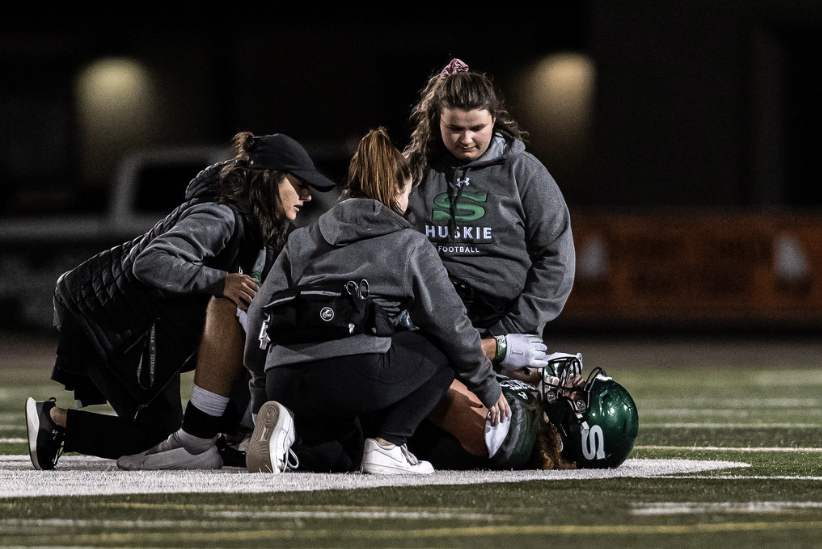
In order for Huskies athletes to thrive, the training staff working behind the scenes must also be at the top of their game. This includes student trainers, whose vital contributions are often underappreciated.
The Huskie Athletics Student Trainer Practicum allows Kinesiology students who complete the KIN 321 (Acute Sport Injury Care and Prevention) course to enroll in KIN 360 and subsequently KIN 460. These are practicum courses allowing students to earn credits for their commitment to a Huskies athletics team for a year.
The Huskies student trainer program welcomes students from all backgrounds, and is especially helpful to those interested in physiotherapy and sports medicine. In an interview with the Sheaf, men’s hockey student trainer Amr Almasri elaborated on why he chose this path. Despite not being from a sports background, Almasri was drawn to the program for two reasons: “I found it a very great program to immerse myself in the sports environment and to get to learn about different careers that are available like physiotherapists, chiropractors… and sports physicians.”
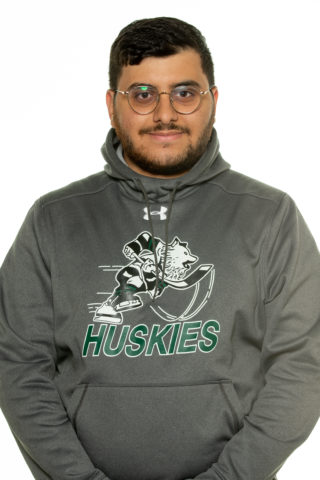
Kate Korchinski, who served as a trainer with both the women’s soccer team for the 2022 season and cross country and track and field (TFCC) for the 2021/22 season, echoed Almasri’s statements. She stated that the program was ideal for gaining experience working with physiotherapists in a sports setting and developing first responder skills.
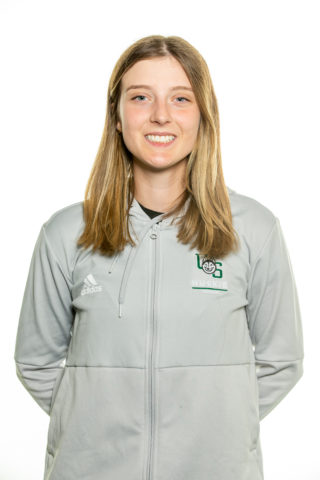
Student trainers are responsible for managing sudden sports injuries, which usually occur due to an athlete falling, twisting joints or through contact with other players. Other duties involve massages and taping, as well as maintaining equipment, packing for road trips and shadowing physiotherapists at athlete appointments. Korchinski described student trainers as “[The physiotherapist’s] eyes at practice”, with communication skills being key for acting as an effective liaison between coaches, athletes and the support staff.
A sentiment shared by the student trainers is that the program provides invaluable opportunities for applying theoretical knowledge to real-world scenarios. Third-year Kinesiology student Saanvi Mital, who is currently working short 2-week stints with each Huskies sport as a “float” student trainer, described her early experiences as busy yet fulfilling:
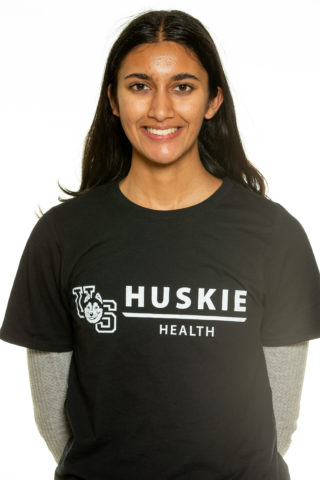
“I’ve learned a lot more than I thought I was going to learn. You get to do a lot more than you’d think… which is nice,” Mital said.
Almasri added that constantly problem solving and managing injuries can greatly boost one’s confidence.
“Compared to last year, when I first started, I am a much more confident person now… This program really gave me the opportunity to apply these skills and be more confident,” Almasri said. “Thinking on your feet and learning how to problem solve are big skills I learned.”
Despite the extensive list of tasks, there is an abundance of support available for trainers. Korchinski stated that as part of an “integrated support team” along with physiotherapists, coaches, dieticians and team doctors, help is always available. Mital credited the senior student trainers for making her comfortable in a new environment, as they shared tips and tricks for different techniques that made the job easier.
A significant time commitment is required due to the nature of the job, with trainers spending upwards of four hours at 2-3 practices per week, including pre and post-practice treatment for players. Game days are similarly taxing, with trainers spending upwards of five to seven hours per game for pre and post-game treatments. Additionally, each trainer has clinical hours throughout the week.
With each team having four trainers and only two trainers required per practice, trainers can tailor their schedule to fit their academic and extracurricular needs. Although that does alleviate stress, Almasri, Korchinski and Mital all said that managing their time was the biggest challenge of being a student trainer.
The time commitment also presents a challenge for keeping up with schoolwork. Mital stated that the rigorous schedule has an adjustment period, but is doable as your time management skills improve over time. Almasri pointed to downtime during practices, games and travel days being ideal for catching up on classes, with Korchinski showing appreciation for accommodating professors.
“Kinesiology is a really supportive college in general… If you miss a class, [professors] are more than willing to help you out… they want to support you,” Korchinski said.
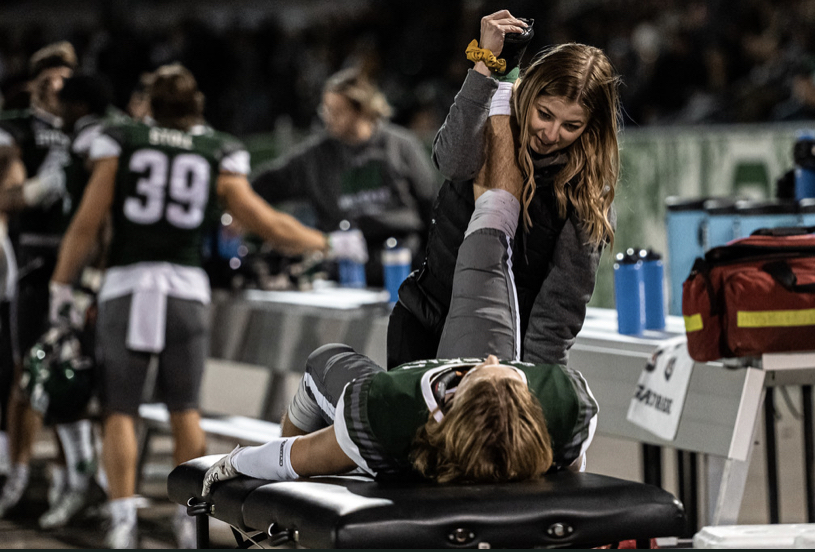
In addition to team-specific trainers, the program offers students the opportunity to work as “float” student trainers for their first year. Floats are not required to travel with teams, which cuts down on the time commitment. Trainers spend two weeks with each sport over the course of the year, getting a taste of the different environments and skills required for different Huskies teams.
For example, Mital enjoyed larger teams such as football and TFCC because there is always something to do. She mentioned developing a potential preference for track especially due to it being indoors and offering many opportunities for massages and taping. Being a volleyball player growing up, she remarked that TFCC would not have been her first choice had she not experienced it via the float program.
Each trainer submits a list of their top three preferred sports prior to their assignment to a specific team. One consideration when picking teams is team size. Having worked with both a large group with TFCC and a small group with women’s soccer, Korchinski noted the differences in her experiences. With a smaller group, she stated it was easier to form a connection with the athletes, while with a larger group there was more variety in the injuries and techniques that trainers are exposed to.
Korchinski, who comes from a figure skating and hockey background, shared her insight on how she picked her teams:
“Have an open mind with what sport you’ll be with, because you’re not necessarily going to get the team you choose”, she said. “When you are ranking your choices, consider what you like to watch because being a trainer is a lot of watching. You’re their number one cheerleader.”
Korchinski described the collective excitement of TFCC athletes, coaches and training staff when they attended Canada West championships last season as one of the highlights of her experience. Mital was similarly delighted by the atmosphere when she worked the Huskies football team’s second game against the Regina Rams on Oct. 15, where the Huskies prevailed 23-20.
In a similar vein, Almasri emphasized the connection he has formed with the players and their inclination to teach him about hockey.
“We were watching an NHL game… one of the players on TV made a play and I didn’t understand it. [All the players] started explaining it to me and telling me about other similar plays… I loved how supportive they were.”
All three trainers find the program to be a great trial for students who may be on the fence about their interest in sports medicine and physiotherapy. Shadowing physiotherapists at the Huskie Health clinic is essential, as trainers are able to directly observe a day in the physiotherapist’s life and study how they diagnose and treat patients. The program also provides networking opportunities with team doctors if a trainer is interested in pursuing similar work in the future. Lastly, it can serve as a launching pad for a career in physiotherapy, as evidenced by Scott Cyr. Cyr was a Huskies student trainer for five years and then a physiotherapist for three years. He recently began working as the Rehab Sports Physiotherapist with the Calgary Flames.
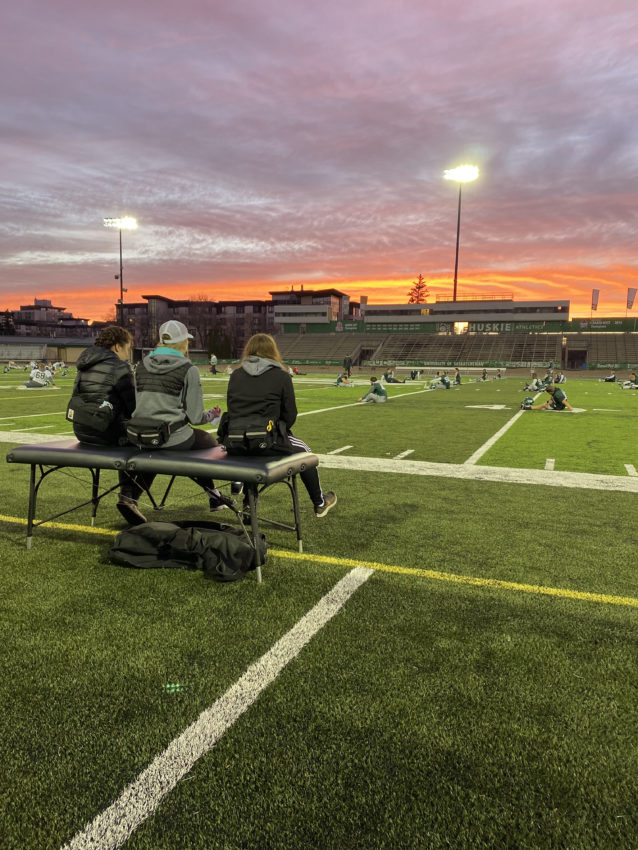
Although the responsibilities can seem daunting, Almasri encouraged those interested in the program to give it a shot:
“It’s not as scary as it looks, and you’ll get to meet lots of people and you’ll have fun being in that environment. So take a leap of faith.”